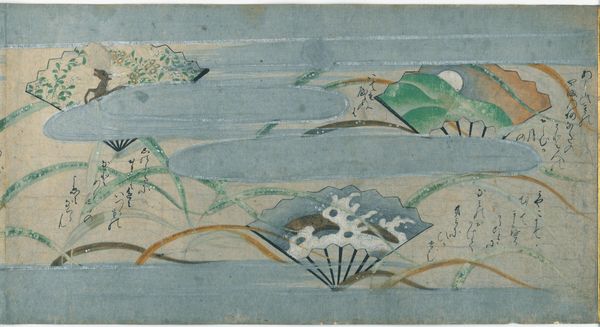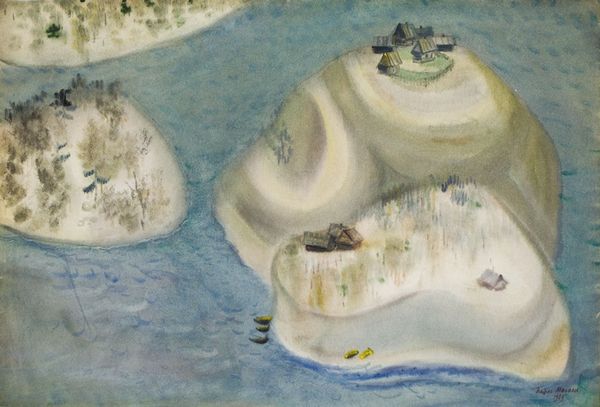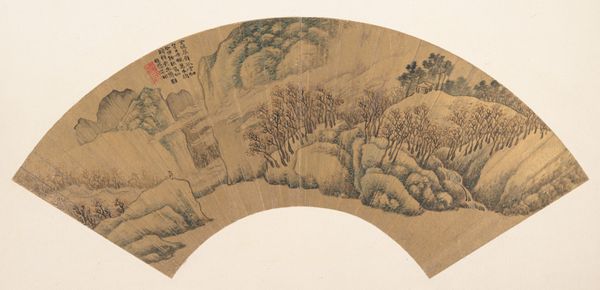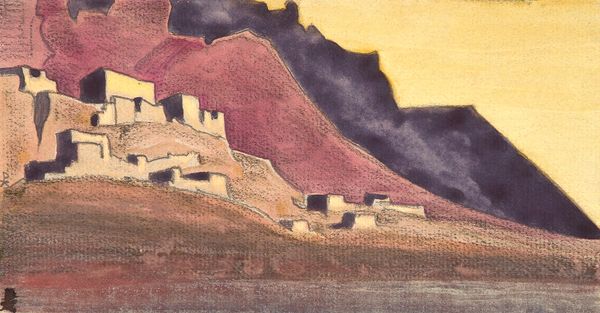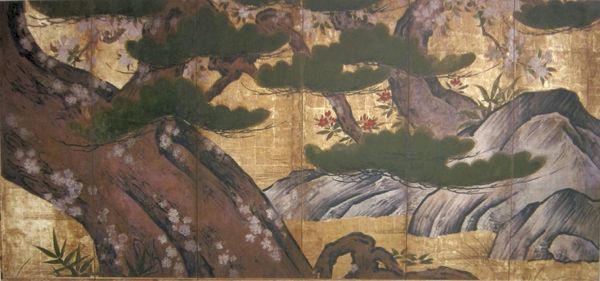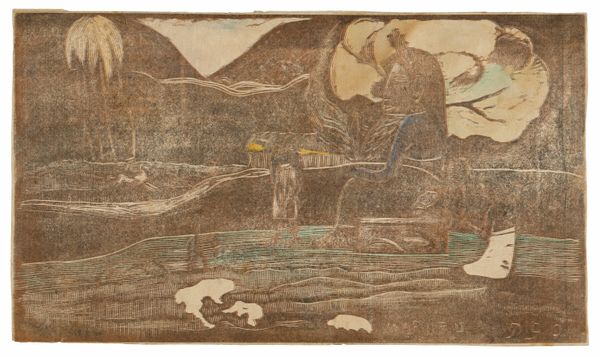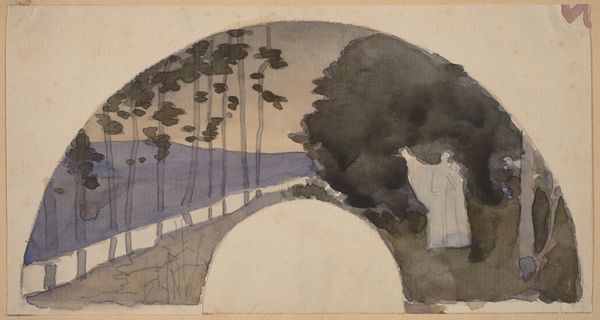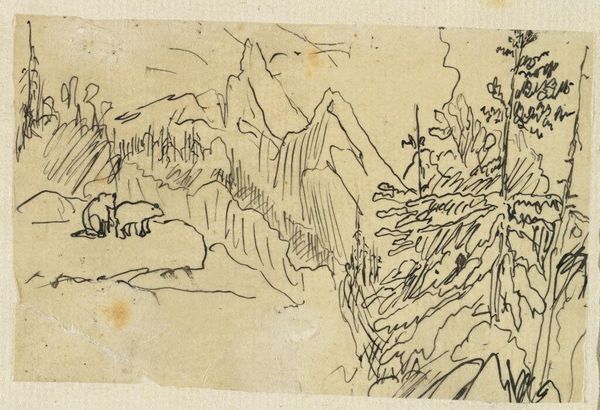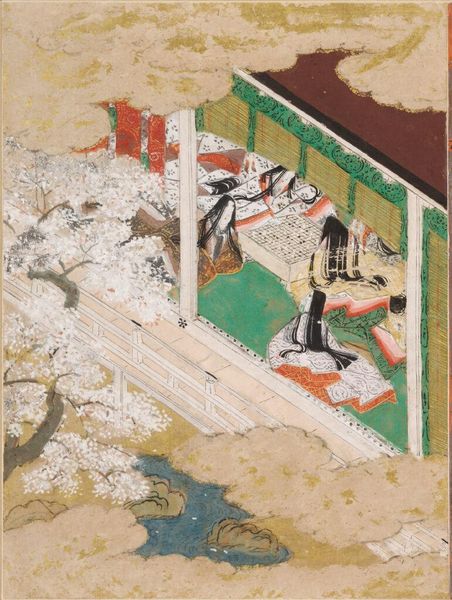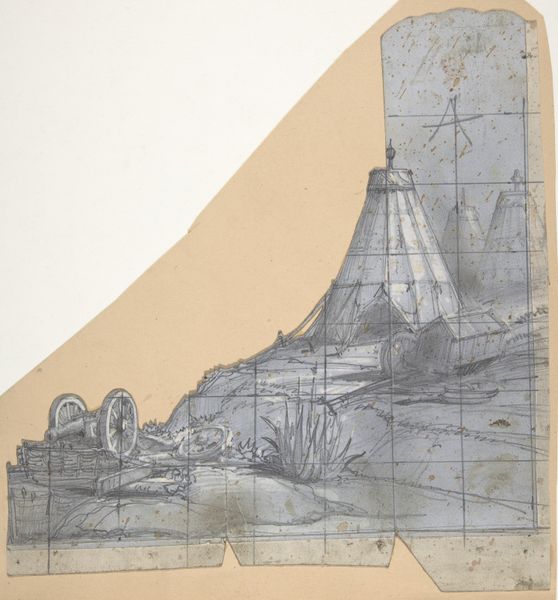
Landscape with Three Figures 1935
0:00
0:00
konstantinosparthenis
National Art Gallery (Alexandros Soutzos Museum), Athens, Greece
painting
#
painting
#
landscape
#
figuration
#
genre-painting
#
modernism
Dimensions: 96 x 106 cm
Copyright: Konstantinos Parthenis,Fair Use
Curator: Here we have Konstantinos Parthenis’s 1935 work, "Landscape with Three Figures," currently housed in the National Art Gallery in Athens. It's a wonderful example of his modernist approach to landscape painting. Editor: It evokes a very dreamlike, almost mythical, state. The colours are muted, giving it a faded quality like an old memory or faded photograph. The scene feels very intimate yet oddly detached. Curator: Parthenis was known for blending Greek traditions with the avant-garde, particularly embracing elements of Symbolism and even a bit of early Surrealism. You see it in how he simplifies forms and uses color. It’s clearly a Greek landscape, but abstracted and idealized. Note the presence of a solitary tree as a prominent feature. Editor: Absolutely, it seems as if the tree stands as a powerful symbol. We have these reclining female figures within a seemingly idealized landscape. I immediately wonder, how is Parthenis constructing female identity here? Curator: Good question. Contextually, he was painting during a time when Greece was searching for a national identity. Artists were often looking back to classical antiquity for inspiration. Editor: Exactly. Are the women Nymphs, or Muses perhaps? What message is being projected when their nudity is contrasted with their passivity? There's a lot of space here for inquiry in contemporary gender dynamics and power within this seemingly serene image. I think their role—whether conscious or not—resonates to this day. Curator: A very interesting analysis. I'm struck by the modernist treatment, how he simplifies and almost flattens the perspective. It rejects the strict representational style, pushing beyond the traditional artistic canon. Editor: For sure. Parthenis creates an unsettling tension, this interplay between the real and the ideal that forces you to consider your relationship to beauty. Curator: Precisely. I think that is why his legacy endures; he wasn’t afraid to pose challenging questions about history, tradition, and even the perception of beauty itself. Editor: This piece, despite its small size, provides such an engaging landscape for broader cultural dialogues to flourish. It makes us reconsider how history shapes the narrative.
Comments
No comments
Be the first to comment and join the conversation on the ultimate creative platform.

